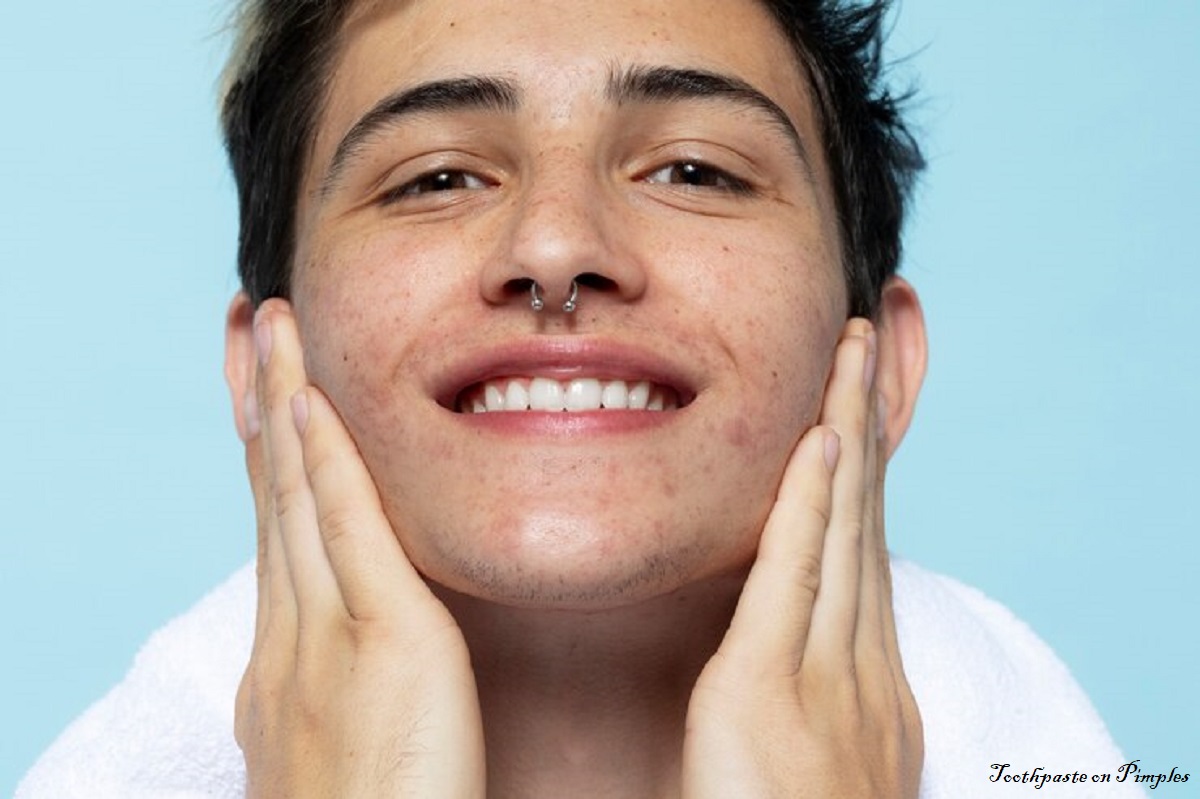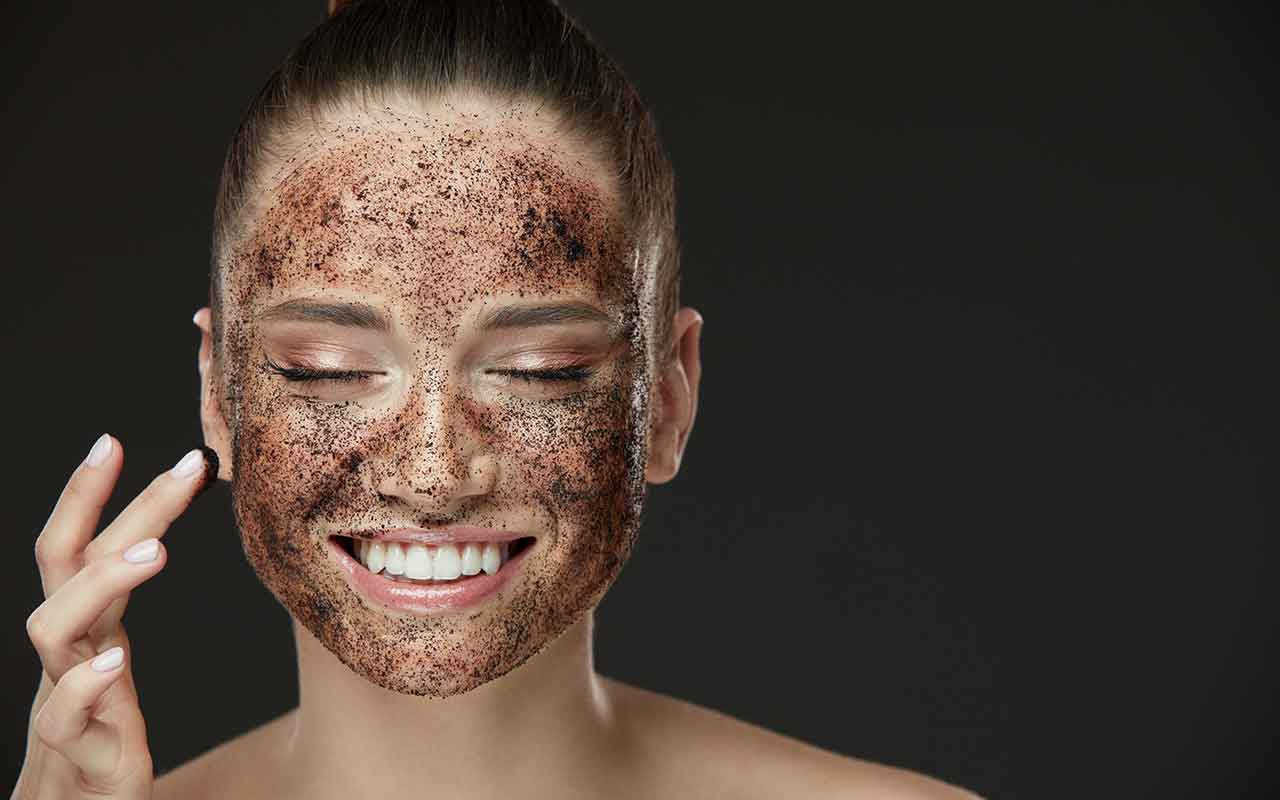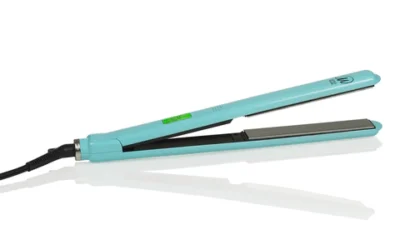Skin
The Truth About Using Toothpaste on Pimples

People regularly turn to home cures for skincare, particularly when dealing with acne, to avoid expensive procedures. Toothpaste has long been marketed as a quick fix for annoying pimples. Is this hack, however, effective, or may it be more harmful than helpful? Let’s look at the science behind using toothpaste for acne, the potential side effects, and safer alternatives for clear skin.
Why Toothpaste Became a Pimple Solution
Because toothpaste includes compounds known to have drying qualities, the concept of using toothpaste to cure pimples arose. Menthol, baking soda, hydrogen peroxide, and alcohol can all help dry out pimples. In theory, administering these compounds topically to a pimple should reduce its size and redness.
Triclosan, an antibacterial compound, was previously a frequent ingredient in toothpaste formulas. Triclosan’s inclusion makes it appear to be a promising pimple therapy because bacteria play a role in acne growth. However, triclosan is no longer widely used because it was removed from many toothpaste formulations due to safety concerns.
Understanding How Pimples Form
Understanding how pimples arise is critical to deciding whether toothpaste may be used as a treatment. When oil (sebum) and dead skin cells block the hair follicles, acne develops. These obstacles promote the growth of bacteria, specifically Propionibacterium acnes, which causes inflammation and pimples.
Conventional acne treatments reduce oil production, eliminate bacteria, increase skin cell turnover, and alleviate irritation. To be effective, a product or therapy should target at least one of these processes while avoiding skin irritation.
What Happens When You Put Toothpaste on a Pimple?
Toothpaste is designed for the teeth, not the skin of the face. Certain toothpaste ingredients, particularly those used in modern formulas, may not be appropriate for the delicate facial area. When toothpaste is applied to the skin, the following can happen:
. Hydrogen peroxide and baking soda: two ingredients in toothpaste, may both seriously dry up the skin. Drying often causes itchy and flaky skin, even if it may momentarily reduce the size of a pimple.
. Skin Irritation: Toothpaste often contains menthol, which gives it a cool, minty feel. In extremely sensitive people, menthol can cause a tingling or slight burning sensation on the skin, which can result in redness, peeling, or even a chemical burn.
. Allergic Reactions: Flavorings, preservatives, and other compounds in toothpaste might induce an allergic reaction, resulting in hives or a rash around the application area.
. Toothpaste’s high pH: Excellent for tooth health, but it can be harmful to the skin. The pH of the skin is slightly acidic, ranging from 4.5 to 5.5, although most toothpaste is alkaline. This pH imbalance may weaken the skin barrier, making it susceptible to irritation, dryness, and even breakouts.

The Risks Outweigh the Benefits
Although toothpaste can temporarily minimize pimples, the risks usually outweigh any potential benefits. This is the cause.
Risk of Skin Damage: Toothbrushing, especially daily, can decrease the skin’s defenses against bacteria, pollution, and other allergens. Inflammation and other chronic skin illnesses such as dermatitis or eczema are also more common in damaged skin.
Scarring might be more difficult to treat than acne if toothpaste causes skin irritation or a chemical burn.
No Long-term Effects: Although toothpaste’s drying effects may temporarily reduce pimple size, they do not prevent new pimples from forming. Toothpaste does not contain chemicals that reduce oil production, accelerate cell turnover, or kill acne-causing bacteria in a controlled manner, as medicated acne remedies do.
Alternatives to Using Toothpaste on Pimples
Pimples can be removed with safe and effective methods, some of which you may already have at home. Dermatologists often suggest the following options:
Salicylic acid: A beta-hydroxy acid (BHA), is a popular acne treatment because it deeply enters pores, exfoliates dead skin cells, and prevents pores from clogging. Salicylic acid is gentle enough for regular use and can be found in a number of over-the-counter spot treatments and cleansers.
Benzoyl peroxide: Benzoyl peroxide, which is well-known for its antibacterial properties, reduces inflammation and the microorganisms that cause acne. It is effective as a spot treatment or full-face application (when applied correctly) and available in a variety of strengths. It is best suited for mild to moderate acne.
Tea tree oil: Known for its antibacterial and anti-inflammatory qualities, is an all-natural alternative. Because it is fairly potent, dilute a few drops with water or a carrier oil before using it on your skin. Tea tree oil may still irritate sensitive skin, so use it with caution.

Aloe vera: Great for sensitive or irritated skin since it soothes and moisturizes. It can reduce redness and speed up healing, even if it does not directly target acne bacteria.
Clay masks: Without drying out the surrounding skin, clay can help absorb excess oil and minimize a pimple. In addition to being commonly used in masks, kaolin, and bentonite clay can be utilized as spot treatments to remove contaminants.
Ice: Wrap an ice cube in a clean handkerchief and apply it to a pimple for a few minutes to reduce swelling and inflammation naturally. This decreases the redness and appearance of a pimple while preserving the skin’s integrity.
Tips to Prevent Pimples
Consider these acne prevention tips to reduce the likelihood of acquiring pimples in the first place:
Cleanse Frequently: To remove oil, dirt, and impurities that can clog pores, wash your face twice a day with a gentle cleanser.
Moisturize: To keep skin hydrated without clogging pores, use a light-textured, non-comedogenic moisturizer.
Avoid touching your face: Since the oils and bacteria on your hands might transfer to it and trigger breakouts.
Be Aware of Your Nutrition: Although the link between nutrition and acne is convoluted, some evidence suggests that dairy products and high-glycemic foods, such as sweets, may aggravate acne in some people. A well-balanced diet and enough water will help you keep your skin healthy.
Should You Ever Use Toothpaste on Pimples?
To put it briefly: no. Although toothpaste may appear to be a practical choice, there are safer and more effective alternatives. There is little scientific evidence to support the usefulness of toothpaste as a spot treatment for acne, and it may even cause more harm than good.
Toothpaste was designed to be used on teeth rather than skin. Numerous well-studied acne treatments provide healthier, clearer skin without the potential risks. If in doubt, consult a dermatologist to establish the best course of action for your skin type and acne problem.
Skin
How to Brighten your Skin with Sea Salt

Revitalizing your complexion doesn’t always demand costly treatments or chemical-laden concoctions. Sometimes, nature’s treasures hold the key. One such gem? Sea salt. Let’s explore how this natural wonder can breathe new life into your skin and elevate your beauty ritual.
Introduction
For centuries, sea salt has been a cherished beauty secret. Brimming with essential minerals such as magnesium, calcium, and potassium, it offers a holistic approach to exfoliation, cleansing, and skin nourishment. Whether combatting dullness or seeking a luminous complexion might be the transformative element your skincare routine craves.
The Allure of Sea Salt for Skin Enhancement
Transcends its culinary purpose to become a formidable skincare ally. Here’s what makes it indispensable:
- Mineral Abundance: Infuses the skin with rejuvenating elements.
- Natural Exfoliant: Eliminates impurities and lifeless skin cells.
- pH Harmonizer: Restores and amplifies your natural radiance.
Let’s delve into its remarkable benefits.
The Exfoliating Elixir:
The Importance of Exfoliation
Exfoliation is a cornerstone of vibrant skin. It sloughs away dead cells, unveiling the fresh, glowing layer beneath. serves as a gentle yet potent exfoliant.
Crafting Your Scrub
- Blend sea salt with nourishing oils like olive or coconut.
- Massage onto damp skin in circular motions.
- Rinse with warm water and gently pat dry.
Regulating Skin’s Oil Equilibrium
The Role of Sebum in Skin Vitality
An imbalance in oil production can spell trouble—too much clogs pores, while too little leads to dryness. Sea salt aids in striking the perfect balance.
DIY Toner
- Dissolve a teaspoon of sea salt in a cup of warm water.
- Transfer the solution to a spray bottle.
- Lightly mist your face post-cleansing.
This toner helps reduce shine while maintaining a hydrated, matte finish.
Eradicating Lifeless Skin Cells
Accumulated dead cells can leave your skin looking fatigued. Sea salt effectively lifts these away.
Hydrating Sea Salt Mask
- Combine sea salt with honey to form a hydrating mask.
- Apply evenly, avoiding the eye area.
- Let it sit for 10-15 minutes, then rinse with lukewarm water.
This dual-action mask exfoliates while delivering deep nourishment.

Moisture Infusion Through Sea Salt
Why Hydration Equals Radiance
Though sea salt is often perceived as drying, it can boost moisture when used correctly.
Indulgent Bath Soak
- Add a cup of sea salt to warm the bathwater.
- Soak for 20 minutes, allowing your skin to absorb its rich minerals.
This ritual leaves your skin supple, soft, and revitalized.
Innovative Uses of Sea Salt in Skincare
Sea Salt and Lemon Scrub:
Mix with fresh lemon juice for an invigorating treatment. Lemon’s vitamin C amplifies brightness while exfoliating.
Sea Salt and Yogurt Mask:
Combine with plain yogurt to create a soothing mask. Yogurt’s lactic acid further enhances your skin’s natural glow.
Sea Salt Steam Facial:
Dissolve a tablespoon of sea salt in hot water. Lean over the steam, covering your head with a towel to open the pores.
Sea Salt and Aloe Vera Serum:
Blend with aloe vera gel for a calming, hydrating serum. Apply for a radiant, dewy finish.

Pro Tips for Safe Sea Salt Application
- Start Gradually: Introduce sea salt slowly to gauge your skin’s response.
- Avoid Over-Exfoliating: Limit exfoliation to 2-3 times weekly to prevent irritation.
- Patch Test: Always test on a small area first.
- Follow with Moisturizer: Lock in hydration post-application.
Conclusion
Sea salt is a versatile, natural powerhouse capable of revolutionizing your skincare routine. From exfoliating away dead skin to balancing oil levels, it offers a non-toxic route to brighter, healthier skin. Embrace and let your skin glow with newfound vitality.
FAQs
- Can sea salt irritate sensitive skin?
Overuse can lead to irritation. Always dilute and patch test. - How often should be used on the face?
Limit to 2-3 times a week for optimal results. - Does sea salt combat acne?
Yes, its antibacterial properties can help reduce acne. - Is sea salt superior to table salt for skincare?
Absolutely. retains natural minerals, offering superior benefits. - Can sea salt be mixed with other skincare staples?
It pairs well with honey, aloe vera, and various oils for enhanced benefits.
Skin
SkinCeuticals P-Tiox Serum Ingredients:
Skin
Which Ingredient is not Recommended for Sensitive Skin?

Sensitive skin often feels like a labyrinth of challenges. One wrong choice and your complexion could erupt in redness, itching, or even an unwelcome breakout. If this resonates, rest assured you’re not alone. For those grappling with reactive skin, the key lies not only in identifying beneficial products but also in recognizing and sidestepping those laden with harmful components. Below, we unravel the ingredients you should meticulously avoid to maintain a serene and resilient complexion.
Alcohol
Variants in Skincare
Alcohols in skincare span a broad spectrum. While fatty alcohols such as cetyl and stearyl alcohol can provide emollient benefits, drying alcohols like ethanol and isopropanol are notorious for their abrasive nature.

Repercussions for Sensitive Skin
These drying variants deplete the skin’s natural oils, leaving it stripped and vulnerable. For sensitive skin types, this spells irritation, marked by redness and an exacerbated dryness that compromises the skin’s protective barrier.
Fragrances
Artificial vs. Natural
Fragrances, whether crafted in a lab or derived from natural sources, can be a minefield for sensitive skin. They serve an aesthetic function but often at the cost of comfort.
Why They Aggravate
Fragrance compounds frequently trigger allergic reactions or irritation. The aftermath may involve stinging, itching, or even inflammation, leaving the skin in distress.
Sulfates
What Are They?
Sulfates, like sodium lauryl sulfate (SLS), are potent surfactants found in cleansers and shampoos, prized for their deep-cleaning prowess.
Impact on Skin’s Barrier
Despite their effectiveness in eliminating dirt and sebum, sulfates can erode the skin’s lipid layer, leading to heightened dryness and irritation—an unwelcome scenario for sensitive skin types.
Parabens
The Preservative Role
Parabens are widely employed as preservatives, extending the shelf life of cosmetic formulations. They are omnipresent in lotions, creams, and various skincare staples.
Risks for Reactive Skin
Beyond their potential to disrupt endocrine function, parabens can elicit allergic responses, rendering them unsuitable for individuals with hyper-sensitive complexions.
Synthetic Dyes
The Culprits
Synthetic dyes, such as FD&C varieties, lend a vivid hue to skincare products but offer no functional benefit to the skin.
Irritation Potential
These dyes can provoke redness and allergic reactions, particularly for those whose skin is predisposed to sensitivity.
Harsh Exfoliants

Physical vs. Chemical
Exfoliants wielding coarse particles can be overly abrasive for tender skin, while potent chemical variants like glycolic acid may also induce irritation.
Gentle Alternatives
Opt for mild exfoliants, such as lactic acid or enzymatic formulations, which slough off dead cells without causing undue distress.
Chemical Sunscreens
Mechanism of Action
Chemical sunscreens operate by absorbing UV rays and converting them into heat.
Ingredients to Shun
Compounds like oxybenzone and avobenzone are common culprits for irritation. Instead, mineral-based sunscreens featuring zinc oxide or titanium dioxide provide a gentler shield.
Essential Oils
Popular Yet Problematic
Essential oils like lavender, tea tree, and peppermint often grace “natural” products but can pose risks.
Sensitization Hazards
Though aromatic, these oils may lead to sensitization over time, culminating in persistent irritation or allergic flare-ups.
Salicylic Acid
Acne-Fighting Properties
Salicylic acid is heralded for its ability to unclog pores and combat acne.
Drawbacks for Sensitive Skin
However, its potent exfoliating action can be too harsh, resulting in dryness and exacerbated sensitivity.
Witch Hazel
Common Use
Witch hazel, a natural astringent, is frequently utilized to soothe inflammation and curb oiliness.
Drying Effects
For sensitive skin, witch hazel may overstrip moisture, leaving the skin parched and more reactive.
Vitamin E
Antioxidant Benefits
Celebrated for its reparative qualities, vitamin E is a staple in many skincare regimens.
Sensitivity Concerns
Ironically, some sensitive skin types find it excessively occlusive, leading to clogged pores and discomfort.
PEGs (Polyethylene Glycols)
Functional Role
PEGs act as thickeners and solvents in numerous formulations.
Contamination Risks
These compounds can be tainted with impurities during production, heightening the risk of irritation for sensitive individuals.
Aluminum
Prevalence in Cosmetics
Aluminum derivatives, commonly found in deodorants and facial powders, are used for their antiperspirant properties.
Potential Irritants
For those with reactive skin, aluminum compounds can incite redness and discomfort.
Formaldehyde
Preservative Utility
Formaldehyde, and its releasing agents, ward off microbial growth in cosmetics.
Health Hazards
As a known carcinogen and irritant, formaldehyde is particularly problematic for sensitive skin, often triggering inflammation and discomfort.
Tips for Selecting Sensitive Skin-Friendly Products

- Scrutinize Labels: Seek out formulations labeled “hypoallergenic” or “for sensitive skin.”
- Patch Test: Before full application, test new products on a small area to preempt adverse reactions.
- Streamline Your Routine: Embrace minimalism in your regimen, focusing on essentials to reduce the likelihood of irritation.
Conclusion
Managing sensitive skin demands vigilance and informed choices. By steering clear of the aforementioned ingredients, you can cultivate a skincare routine that nurtures rather than aggravates. Prioritize products designed to soothe and protect, ensuring your skin remains calm and balanced.
FAQs
- What is the ideal routine for sensitive skin?
Gentle cleansing, hydration, and sun protection are paramount. Avoid known irritants. - How can I identify suitable products?
Look for labels indicating “hypoallergenic,” “fragrance-free,” or “formulated for sensitive skin.” - Is retinol compatible with sensitive skin?
Low-strength retinol can be tolerated if introduced gradually, always paired with a hydrating moisturizer. - How frequently should sensitive skin be exfoliated?
Once weekly, use a gentle exfoliant. - Are natural products inherently safer for sensitive skin?
Not necessarily. Even natural ingredients, such as essential oils, can provoke reactions.
-

 Skin9 months ago
Skin9 months agoNatural Oil-Free Face Moisturizer Reviews & Buyers Guide
-

 Hair1 month ago
Hair1 month agoDoes a Flat Iron Kill Lice? Fact or Myth?
-

 Hair9 months ago
Hair9 months agoDoes a Flat Iron Kill Lice? Fact or Myth?
-

 Skin8 months ago
Skin8 months agoAbout Face Beauty: Tips for Enhancing Your Natural Beauty
-

 Hair9 months ago
Hair9 months agoFunction of Beauty: Personalized Hair Care for Your Unique Needs
-

 Skin8 months ago
Skin8 months agoBeautiful Nails: Tips and Tricks for Healthy and Gorgeous Nails
-

 Hair9 months ago
Hair9 months agoTitanium Flat Iron vs. Ceramic
-

 Skin9 months ago
Skin9 months agoNeutrogena Naturals Multi-Vitamin Nourishing Face Moisturizer Review





